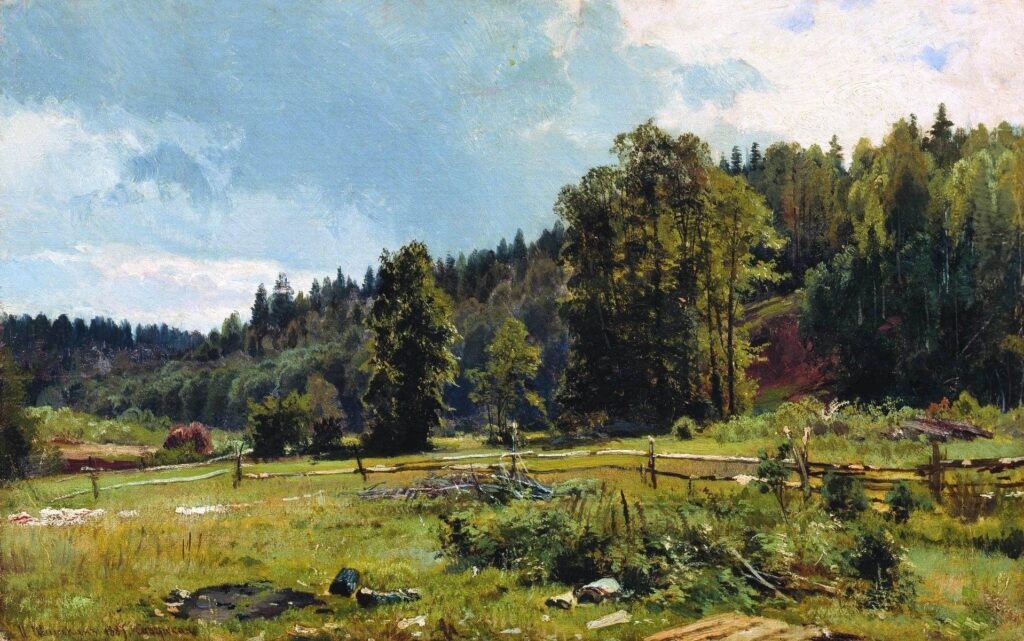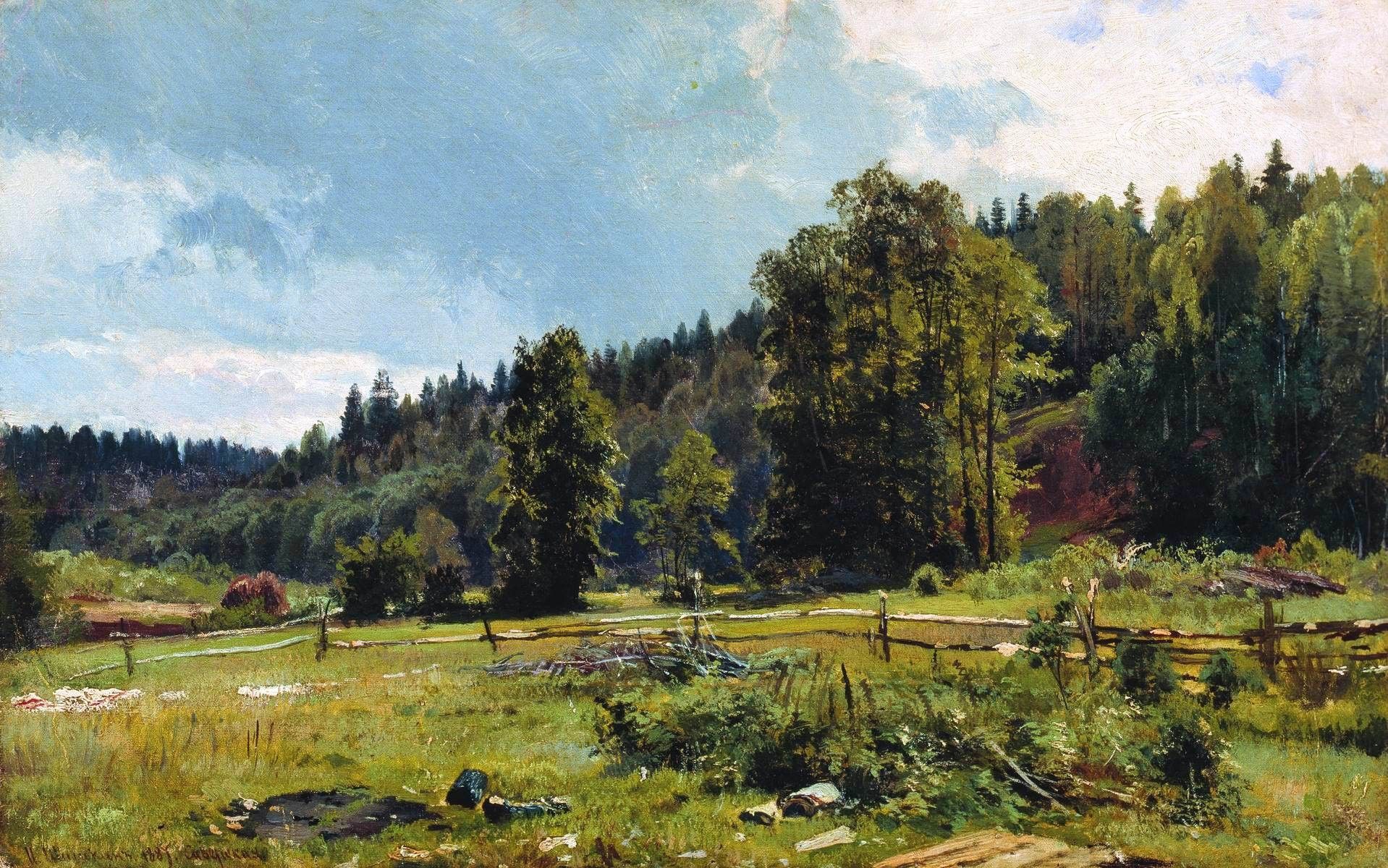
Emerging Trends in Russian Modern Landscape Art: A Contemporary Perspective
Russian modern landscape art is undergoing a fascinating transformation, reflecting the nation’s complex relationship with its vast and varied environment. From the stark beauty of Siberia to the rolling hills of the European plains, contemporary artists are interpreting the landscape in innovative and thought-provoking ways. This article delves into the key trends in Russian modern landscape art, exploring the themes, techniques, and artists that are shaping this vibrant field. The goal is to provide a comprehensive overview of the current state of Russian modern landscape art, highlighting its significance in the global art scene.
The Resurgence of National Identity in Landscape Painting
One of the most prominent trends in Russian modern landscape art is a renewed focus on national identity. Artists are increasingly drawing inspiration from Russia’s rich history, folklore, and cultural heritage. This manifests in various ways, from depictions of traditional rural scenes to reinterpretations of iconic historical landscapes. The artists are exploring what it means to be Russian through the lens of the land. This exploration often involves a critical examination of Russia’s past and present, resulting in powerful and evocative works. For instance, some artists are revisiting the landscapes that inspired the great Russian masters of the 19th century, offering a contemporary perspective on these familiar scenes. The use of traditional techniques, combined with modern artistic sensibilities, creates a unique blend that resonates with audiences both within Russia and abroad.
Urban Landscapes: Reflecting the Modern Russian City
While traditional landscapes remain popular, Russian modern landscape art also embraces the urban environment. The rapid urbanization of Russia over the past few decades has led to a growing interest in depicting the modern Russian city. These urban landscapes often portray the stark contrasts between the old and the new, the traditional and the modern. Artists capture the energy and dynamism of cities like Moscow and St. Petersburg, while also exploring the challenges of urban life, such as pollution, overcrowding, and social inequality. The use of bold colors, abstract forms, and unconventional materials is common in these urban landscapes, reflecting the chaotic and ever-changing nature of the modern city. These works serve as a powerful commentary on the social and environmental impact of urbanization in Russia.
Environmental Concerns and Ecological Art
Environmental concerns are increasingly influencing Russian modern landscape art. As awareness of climate change and environmental degradation grows, artists are using their work to raise awareness about these critical issues. Ecological art, which focuses on the relationship between humans and the environment, is becoming increasingly popular. Artists are creating installations, sculptures, and paintings that highlight the beauty and fragility of the Russian landscape, while also drawing attention to the threats it faces. Some artists are even using recycled materials and sustainable practices in their work, further emphasizing their commitment to environmental stewardship. These eco-conscious artworks often depict endangered species, polluted rivers, and deforested areas, serving as a stark reminder of the environmental challenges facing Russia today.
Abstract and Experimental Approaches
Beyond traditional and representational styles, Russian modern landscape art also embraces abstract and experimental approaches. Artists are pushing the boundaries of the genre by using innovative techniques, unconventional materials, and conceptual frameworks. Abstract landscapes often focus on the emotional and sensory experience of being in nature, rather than depicting specific locations or scenes. Experimental artists are exploring new ways of interacting with the landscape, such as creating land art installations or using digital technology to manipulate and transform natural imagery. These avant-garde approaches challenge traditional notions of landscape art and offer new perspectives on the relationship between humans and the environment. The exploration of texture, color, and form takes precedence over realistic representation, allowing for a more subjective and emotional interpretation of the landscape.
The Influence of Technology and Digital Art
Technology is playing an increasingly important role in Russian modern landscape art. Digital art, including digital painting, photography, and video, is gaining popularity as a medium for exploring the landscape. Artists are using digital tools to create immersive and interactive experiences that allow viewers to engage with the landscape in new ways. For example, some artists are creating virtual reality installations that transport viewers to remote and inaccessible locations, while others are using augmented reality to overlay digital information onto real-world landscapes. The use of drones and aerial photography is also becoming more common, providing artists with new perspectives on the landscape from above. These technological advancements are expanding the possibilities of landscape art and opening up new avenues for creative expression. Furthermore, the internet and social media platforms are facilitating the dissemination of Russian modern landscape art to a global audience.
Key Artists Shaping the Landscape
Several key artists are at the forefront of the trends in Russian modern landscape art. These individuals are pushing the boundaries of the genre and shaping its future direction. While a comprehensive list would be extensive, some notable figures include: [See also: Contemporary Russian Painters] and [See also: Modern Russian Sculptors]. These artists, through their unique styles and perspectives, are contributing to the richness and diversity of the Russian art scene. Their work often reflects a deep connection to the land, a critical awareness of environmental issues, and a willingness to experiment with new techniques and technologies.
The Role of Galleries and Institutions
Galleries and institutions play a crucial role in supporting and promoting Russian modern landscape art. Numerous galleries across Russia and internationally showcase the work of contemporary landscape artists, providing them with a platform to reach a wider audience. Museums and art centers also play a vital role in preserving and exhibiting these works, ensuring that they are accessible to future generations. Art fairs and biennales provide opportunities for artists to network, collaborate, and showcase their work on a global stage. The support of these institutions is essential for the continued growth and development of the Russian art scene. Furthermore, the increasing availability of online galleries and virtual exhibitions is expanding the reach of Russian modern landscape art to a global audience.
The Future of Russian Modern Landscape Art
The future of Russian modern landscape art looks bright. As Russia continues to grapple with issues such as urbanization, environmental degradation, and national identity, artists will undoubtedly continue to explore these themes in their work. The increasing availability of technology and digital tools will provide artists with new avenues for creative expression, while the growing awareness of environmental issues will likely lead to a further expansion of ecological art. The support of galleries, institutions, and collectors will be crucial for the continued growth and development of the Russian art scene. Ultimately, Russian modern landscape art will continue to evolve and adapt, reflecting the ever-changing landscape of Russia itself. The fusion of traditional techniques with modern sensibilities ensures that Russian modern landscape art remains relevant and engaging for audiences worldwide. The ongoing dialogue between artists, critics, and the public will shape the future of this dynamic and evolving art form.
Conclusion
In conclusion, trends in Russian modern landscape art are diverse and dynamic, reflecting the country’s complex relationship with its environment and its rich cultural heritage. From the resurgence of national identity to the exploration of urban landscapes and environmental concerns, contemporary artists are pushing the boundaries of the genre and offering new perspectives on the world around us. The influence of technology and the support of galleries and institutions are further shaping the future of Russian modern landscape art, ensuring that it remains a vibrant and relevant force in the global art scene. By embracing innovation and honoring tradition, Russian modern landscape art continues to captivate and inspire audiences worldwide, solidifying its place as a significant contribution to the broader landscape of contemporary art.

